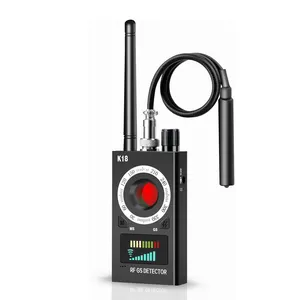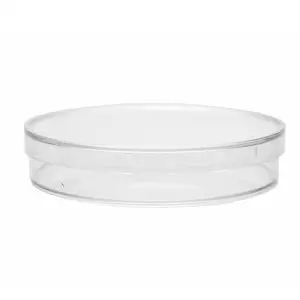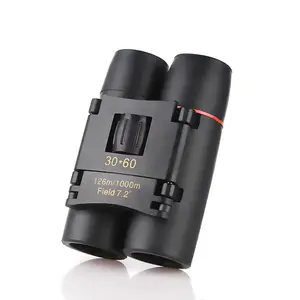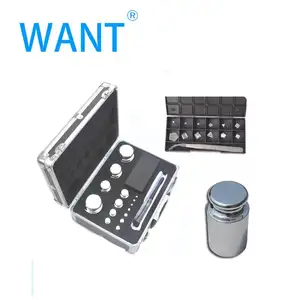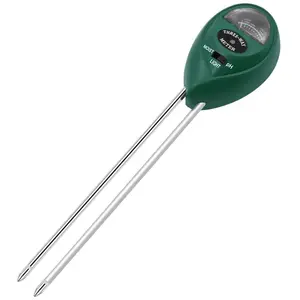Popular in your industry







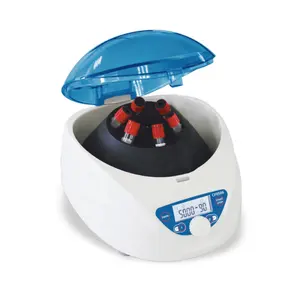































































Related Searches:






















































































































About blood plasma separation machine
In the intricate dance of blood component separation, plasma stands out as a vital performer, carrying an array of proteins and substances crucial to bodily functions. The art of isolating this golden-hued component lies at the heart of medical innovation and patient care. This guide delves into the sophisticated world of blood plasma separators, exploring the technology that powers purity and performance in clinical and research settings. From centrifugation to membrane-based techniques, we navigate through the diverse equipment available on Alibaba.com, their applications across industries, and the relentless pursuit of quality and compliance in their operation. Embark on this professional journey to understand how the right plasma separation technology can revolutionize therapeutic and diagnostic outcomes.
Understanding Blood Plasma Separators

Blood plasma separation is a critical process in medical and research settings, involving the extraction of plasma from whole blood. Plasma, the largest portion of blood, is a protein-rich substance that performs essential functions such as transporting blood cells, coagulating blood, and regulating the body's water balance. The separation of plasma is typically achieved through centrifugation, where the force from rapid spinning results in a stratification of blood components based on density. This process yields layers of red blood cells, white blood cells with platelets, and plasma. Advanced techniques, such as buoyancy activated cell sorting (BACS), utilize microbubbles to target and remove specific cells, enhancing the purity of the plasma collected. These methods are crucial for preparing samples for further analysis or treatment, ensuring that researchers and clinicians can focus on the plasma without interference from other cell types.
Types of Blood Plasma Separators on Alibaba.com

Alibaba.com showcases a diverse range of blood plasma separators, catering to various medical and laboratory applications. The selection includes portable separators designed for efficient blood plasma extraction, suitable for environments where mobility is a necessity. Centrifuge machines, tailored for use with PRP kits, accommodate a variety of tube sizes from 15ml to 60ml, demonstrating versatility in processing capacity.
For clinical and medical laboratory settings, low-speed centrifuges focus on platelet-rich plasma processing. High-speed centrifuges offer rapid separation of plasma and blood cells, a critical feature for high-throughput requirements. The laboratory-centric models are designed for electronic precision and low-speed operation, indicating a balance between performance and gentle processing.
Manual separating clips provide a hands-on approach to plasma separation, while centrifuges meeting international quality standards ensure compliance with rigorous quality standards. The range extends to specialized equipment for animal blood processing and those tailored for hospital use, ensuring a sterile and efficient separation process.
In addition to these, Alibaba.com offers a variety of centrifuges with variable speeds and capacities, ensuring that there is a plasma separator available for every specific need, from small tabletop units to more robust, high-capacity machines.
Centrifugal Plasma Separation Technology
Centrifugal plasma separation is a pivotal technique in diagnostic laboratories and clinical settings, utilizing the principle of centrifugal force to segregate blood components based on their density. This method involves spinning blood samples at high speeds within a centrifuge, causing the denser elements, such as red blood cells, to move outward to the bottom of the tube, while plasma remains at the top. The process is typically swift, often completed in under 15 minutes, ensuring that the plasma can be promptly used for various therapeutic and diagnostic purposes. The centrifuges designed for this task come with different rotor types, including swing-out and fixed-angle rotors, each catering to specific requirements of the separation process. The swing-out rotor is particularly noted for its ability to deposit particles evenly at the tube's bottom, facilitating easier post-centrifugation separation. On the other hand, fixed-angle rotors are adept at handling various tube capacities, making them versatile for multiple applications. The efficiency of this technology allows for accurate separation, which is crucial for patient outcomes and advancing medical research.
Membrane-Based Plasma Separation
Membrane-based separation is recognized for its contributions to the plasmapheresis market, particularly in the development and supply of specialized membranes for extracorporeal therapeutic plasmapheresis. These membranes are integral to devices that perform blood plasma separation.
The capillary membranes, created through a thermally induced phase separation process, are made from Polypropylene. These capillary membranes are inherently hydrophobic but can be modified for use. They are specifically utilized in plasma separation processes.
Another notable product is the capillary membranes produced via a solvent induced phase separation process, using Polyethersulfone with Polyvinylpyrrolidone to enhance wettability and biocompatibility. These are versatile, being employed not only in plasma separation but also in blood donation and other related applications.
Applications of Blood Plasma Separators in Various Industries

Blood plasma separators play a crucial role in the fractionation process, which is essential for producing various plasma-derived products. These separators are extensively used not only in the fractionation itself but also in preparing ultrapure water needed for cleaning systems, as well as handling dilution fluids and additives. The technology's application extends to the development of filters designed to remove specific antibodies from donated plasma, facilitating safer transfusions across different blood groups. In the medical field, plasma separators are instrumental in manufacturing immunoglobulins and clotting factors, with certain technologies enabling the recovery of high-purity proteins for therapeutic use. Research in developing countries is exploring the use of nonwoven and membrane media filters as simpler alternatives to centrifugation for plasma processing. The significance of plasma separators is also evident in their contribution to reducing consumable costs in albumin production through membrane improvements. Their versatility is further highlighted by their use in large-scale production of recombinant proteins, where they can enhance efficiency and reduce downtime.
Key Features and Innovations in Plasma Separation
The global plasma fractionation market is characterized by the adoption of advanced technologies aimed at enhancing the efficiency and effectiveness of plasma separation. Innovations in the field have led to the development of sophisticated fractionation processes that are crucial for treating various health conditions. These processes are particularly important for the inactivation of viruses and prions, which are key attributes of plasma fractionation. The competitive landscape of the market has seen a focus on streamlining technology to improve product offerings. This focus on technological advancement is essential for meeting the growing healthcare demands and treating conditions related to immunologic deficiencies, infections, and trauma.
Market players in the plasma fractionation industry are engaged in strategic collaborations and expansions to refine their techniques and enhance their market presence. The drive towards innovation is not only improving the product portfolio but also ensuring that the fractionation processes meet the stringent requirements of various treatment protocols. The technology used in plasma fractionation has to cater to the needs of molecular biology and associated healthcare practices, making it a field that is constantly evolving to provide better outcomes for patients worldwide.
Material Quality and Compliance Standards
In the realm of clinical diagnostics, the integrity of specimen collection and handling is paramount. Blood plasma separators must adhere to stringent compliance standards to ensure the accuracy of laboratory results. Regulations mandate that all specimens be clearly labeled to eliminate any uncertainty regarding patient identity, specimen source, and the collection's time and date. This rigorous labeling protocol is crucial for maintaining the integrity of the blood plasma separation process.
Furthermore, adherence to compliance standards for Clinical Laboratories is non-negotiable for blood plasma separation devices. These regulations stipulate that specimens not meeting the exacting standards of identification and handling shall not be processed. This underscores the importance of using plasma separators that are designed and manufactured in compliance with such regulatory frameworks, ensuring that every phase of blood handling, from collection to separation, meets the highest standards of quality and precision.
The compliance of blood plasma separators with these regulations is not just a matter of legal necessity but also a cornerstone of laboratory best practices. It reflects a commitment to ethical standards and a dedication to providing quality laboratory services. For professionals selecting a plasma separator, it is essential to choose devices that are not only efficient in separation but also exemplary in meeting and exceeding these compliance standards.
Advantages of Using High-Quality Plasma Separators
The utilization of a disc stack separator system with a Hermetic design in blood plasma separation is a testament to the advancements in this field. This design is pivotal in treating the medium with the delicacy required to prevent haemolysis, which is crucial in maintaining the integrity of sensitive blood cells. The preservation of these cells is not only essential for the resultant plasma's color but also plays a significant role in the overall separation efficiency. By ensuring that the blood cells are not compromised during the separation process, the quality of the final product is significantly enhanced. Such a system exemplifies the advantages of incorporating sophisticated technology in plasma separators, which are designed to meet the stringent demands of purity and performance in various applications.
Selecting the Right Plasma Separator for Your Needs
When choosing the appropriate plasma separator for your laboratory or medical facility, it is crucial to consider a range of factors including technology, efficiency, and compliance with health and safety standards. Alibaba.com offers a selection of high-quality plasma separation machines that cater to these needs, ensuring that you can find the perfect match for your specific requirements.
Conclusion
The landscape of blood plasma separation is a testament to the intersection of technology and healthcare, where precision meets patient safety. This article has traversed the spectrum of plasma separators, highlighting the importance of versatility and specificity in meeting the demands of various applications, from immunoglobulin production to recombinant protein manufacturing. Innovations in the field are continuously shaping the plasma fractionation market, ensuring virus inactivation and prion removal, while compliance with stringent standards remains non-negotiable. The discerning selection of a high-quality plasma separator, such as a Hermetic disc stack system, is not just a choice but a commitment to excellence in healthcare. As we close this guide, it's clear that the right plasma separation technology is not just about enhancing laboratory efficiency; it's about safeguarding the integrity of blood components, ensuring the highest quality of care, and ultimately, saving lives.
